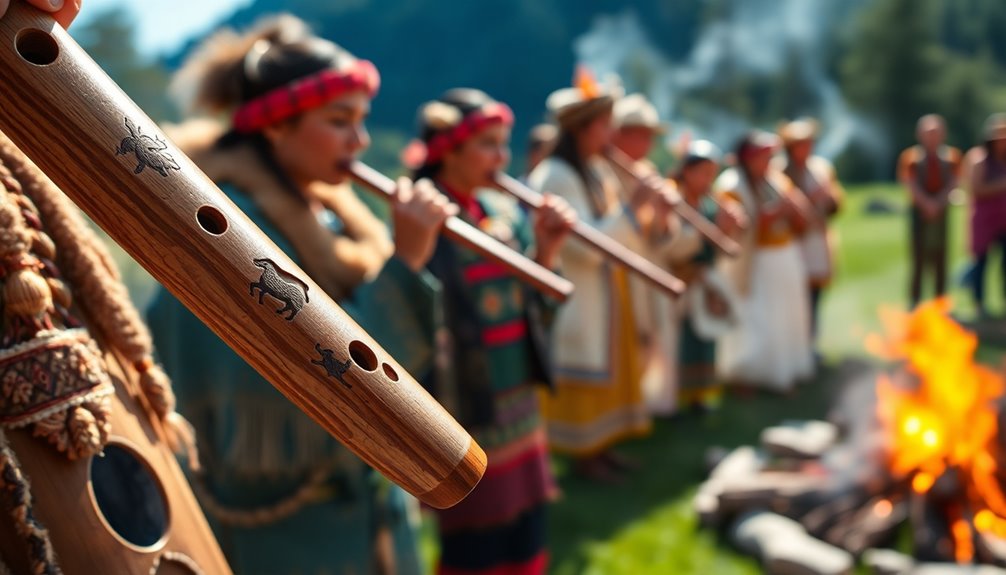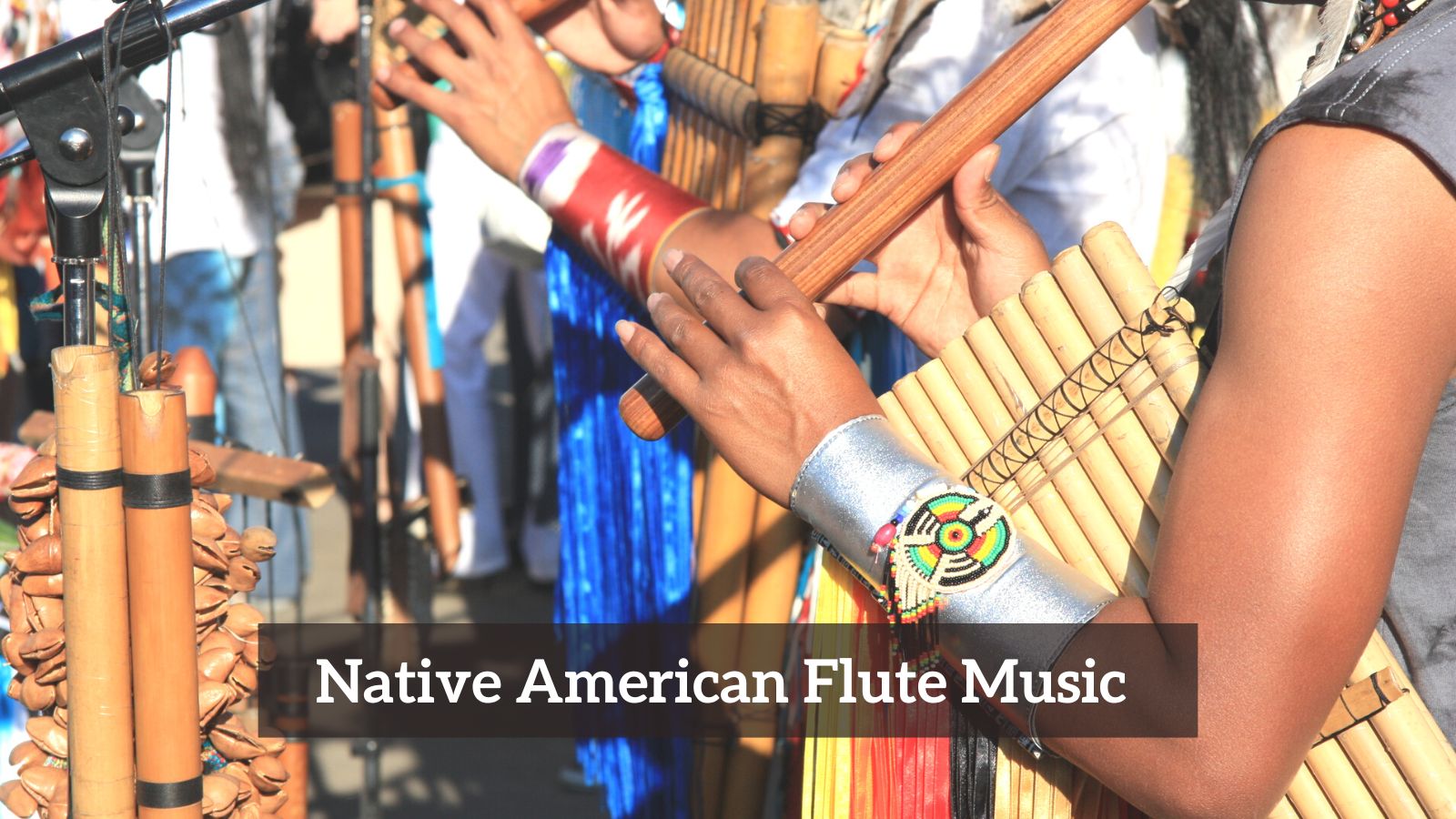
Echoes of the Soul: The Enduring Spirit and Musical Heritage of the Native American Flute
The moment its first notes emerge, a Native American Flute ceases to be mere wood and breath. It transforms into a haunting, ethereal voice, weaving tales of ancient landscapes, deep spiritual reverence, and profound human emotion. This instrument, often crafted from cedar, redwood, or bamboo, is far more than a musical device; it is a spiritual conduit, a vessel for healing, and a living testament to the resilience and richness of Indigenous cultures across North America. From its pre-Columbian origins to its contemporary resurgence, the Native American Flute embodies a unique blend of musical heritage and spiritual expression, resonating with a timeless power that continues to captivate and inspire.
A Deep Rooted History: From Ancient Echoes to Cultural Silence
The history of the Native American Flute is as ancient and layered as the lands it represents. Archaeological evidence suggests that flute-like instruments, crafted from bone, clay, or cane, existed in North America for millennia. Excavations in the Southwestern United States, for instance, have unearthed flutes dating back over 2,000 years, indicating a long-standing tradition of wind instrument creation among Indigenous peoples. These early instruments varied widely in design and purpose, reflecting the diverse cultural practices of their makers.
The wooden Native American Flute, as it is largely recognized today, gained prominence in the Plains and Woodlands regions. Often made from softwoods like cedar, its design is distinct: a two-chambered instrument with an internal wall (or "block") that directs the air across a fipple, creating its characteristic warm, reedy tone. Unlike many European flutes, the Native American Flute is typically tuned to a pentatonic (five-note) scale, which naturally produces melodies that are often described as melancholic, meditative, and inherently pleasing to the ear, even for novice players. This inherent tunefulness contributes to its accessibility and widespread appeal.
For centuries, the flute played a vital role in tribal life. It was central to courtship rituals, earning it the moniker "courting flute," where young men would play melodies to express their affection. It was used in ceremonies, for healing, storytelling, and personal meditation. Each flute was often considered a living entity, infused with the spirit of the wood and the intentions of its maker and player. Melodies were rarely written down; instead, they were passed through oral tradition, improvised, and deeply personal, reflecting the player’s inner landscape.

However, the arrival of European settlers brought profound disruption. Colonial policies, forced assimilation, the suppression of Indigenous languages and spiritual practices, and the devastating impact of boarding schools led to a near-extinction of many Native cultural traditions, including the making and playing of the flute. By the mid-20th century, the Native American Flute was largely forgotten outside a few isolated communities, its haunting melodies fading into silence.
The Spiritual Heartbeat: A Voice of Connection and Healing
What truly sets the Native American Flute apart is its profound spiritual dimension. For many Indigenous people, playing the flute is not merely a musical performance; it is a form of prayer, a meditation, a direct communion with the Creator, the ancestors, and the natural world. The act of breathing life into the instrument is seen as an act of infusing spirit into sound.
R. Carlos Nakai, the internationally acclaimed Ute/Navajo flutist who is widely credited with spearheading the flute’s modern revival, eloquently articulates this connection: "The Native American Flute is not merely an instrument; it is a conduit to the soul, a voice that connects us to the earth and the ancestors." This sentiment is echoed across diverse Indigenous traditions. The sound itself is often described as carrying healing vibrations, capable of calming the mind, soothing the spirit, and even aiding physical recovery.
The flute’s connection to nature is undeniable. Its melodies often evoke the sounds of the wind, flowing water, bird calls, or the vast silence of the desert night. Playing the flute can be a way to express gratitude for the land, to seek guidance, or to simply be present in the moment. The breath, which animates the flute, is itself a sacred concept in many Indigenous cultures, representing life force and spirit. Thus, each note is an exhalation of personal spirit, a whisper from the heart.
In ceremonial contexts, the flute can be used to set a sacred atmosphere, to accompany dances, or to guide spiritual journeys. In personal practice, it serves as a powerful tool for introspection, emotional release, and stress reduction. Its ability to resonate deeply within the listener often transcends cultural boundaries, touching something primal and universal within the human spirit.
A Resurgence of Heritage: Breathing New Life into an Ancient Tradition
The latter half of the 20th century witnessed a remarkable resurgence of interest in the Native American Flute, driven by a renewed pride in Indigenous identity and a growing global appreciation for world music and spiritual practices. Pioneers like R. Carlos Nakai, with his groundbreaking recordings and performances, brought the flute to international prominence, showcasing its beauty and versatility to a vast audience. Nakai’s album "Canyon Trilogy" (1989) became the first Native American album to achieve gold status, opening doors for countless other Indigenous artists.
Key to this revival was also the dedicated work of flutemakers and cultural preservers. Individuals like John Herrington, who spent decades researching, documenting, and teaching the craft of traditional flute making, played a crucial role in ensuring that the knowledge of how to build and play these instruments was not lost. Workshops, festivals, and cultural gatherings began to re-emerge, providing spaces for Indigenous people to reconnect with their heritage and for non-Indigenous people to learn with respect and appreciation.

Today, the Native American Flute scene is vibrant and diverse. A new generation of Indigenous flutists, such as Joseph FireCrow (Cheyenne), Kevin Locke (Lakota), and Mary Youngblood (Seminole/Aleut), continue to innovate while honoring traditional roots. They perform in concert halls, collaborate with orchestras, and blend the flute’s ancient sounds with contemporary genres like jazz, ambient, and electronic music, demonstrating its adaptability and enduring relevance.
The internet and social media have further propelled the flute’s reach, allowing artists to share their music globally and fostering communities of players and enthusiasts. Online tutorials, forums, and virtual workshops make learning the flute more accessible than ever, though the importance of learning from authentic sources and with cultural respect remains paramount.
Navigating the Modern Landscape: Authenticity, Appreciation, and Appropriation
The widespread popularity of the Native American Flute in the modern era, particularly its adoption by the New Age movement, presents both opportunities and challenges. On one hand, it has introduced the instrument to millions, fostering appreciation for Indigenous artistry and culture. On the other hand, it has raised concerns about cultural appropriation, commodification, and the potential dilution of its sacred meaning.
The distinction between appreciation and appropriation is critical. Appreciation involves learning about, respecting, and supporting Indigenous cultures, ideally by purchasing from Native artists and learning from Native teachers. Appropriation, conversely, often involves taking elements of a culture without understanding or acknowledging their origins, sometimes profiting from them without giving due credit or benefit to the source community.
Many Indigenous artists and cultural leaders emphasize the importance of context, intent, and relationship. They encourage non-Indigenous individuals to engage with the flute from a place of genuine respect, to understand its spiritual and historical significance, and to acknowledge its origins. The flute’s story is inextricably linked to the stories of the people who created and preserved it.
Looking forward, the Native American Flute continues to be a powerful symbol of Indigenous resilience, creativity, and spiritual depth. It serves as a reminder of the vital connection between music, culture, and the human spirit. Its melodies, born of breath and wood, echo the wisdom of ancestors and offer solace and inspiration in a rapidly changing world. As long as there are hands to craft it and breath to give it voice, the Native American Flute will continue its timeless song, carrying the spirit of its people across generations and into the hearts of all who listen. Its legacy is not just one of musical artistry, but of enduring cultural identity and profound spiritual expression.


